For many, the natural world is one of the most important parts of life. Whether you love to immerse yourself in botany and zoology or are just the outdoorsy type, you might have questions about the myriad of plants in the wild. Across the globe, there are roughly 65,000 different species of trees currently recognized. However, only a handful of these trees have names that begin with the letter E. Let’s explore 16 of them and discuss what makes them unique.
1. English Oak
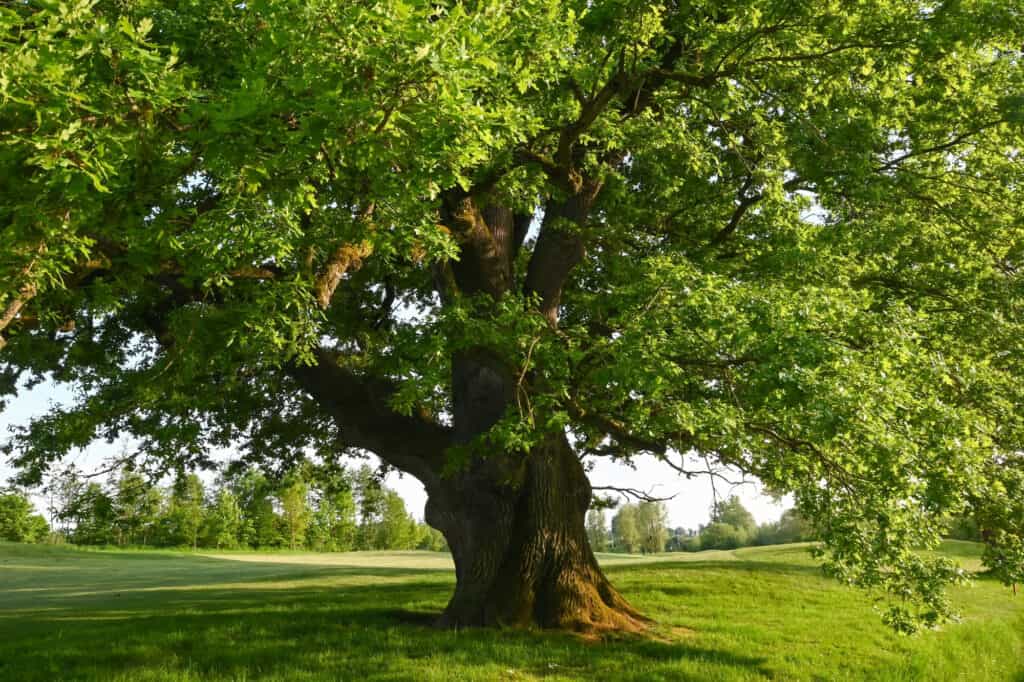
Few trees are prouder than the mighty oak.
©James d’Almeida/Shutterstock.com
The English oak in particular is native to the United Kingdom and the Caucasus. According to the North Carolina Extension Gardener Plant Toolbox, “It was brought to North America in the 1600s from Europe and has been an important lumber tree for furniture and shipbuilding. It is now found in the eastern and northwestern United States and southeastern and southwestern Canada.”
2. Eastern Fir
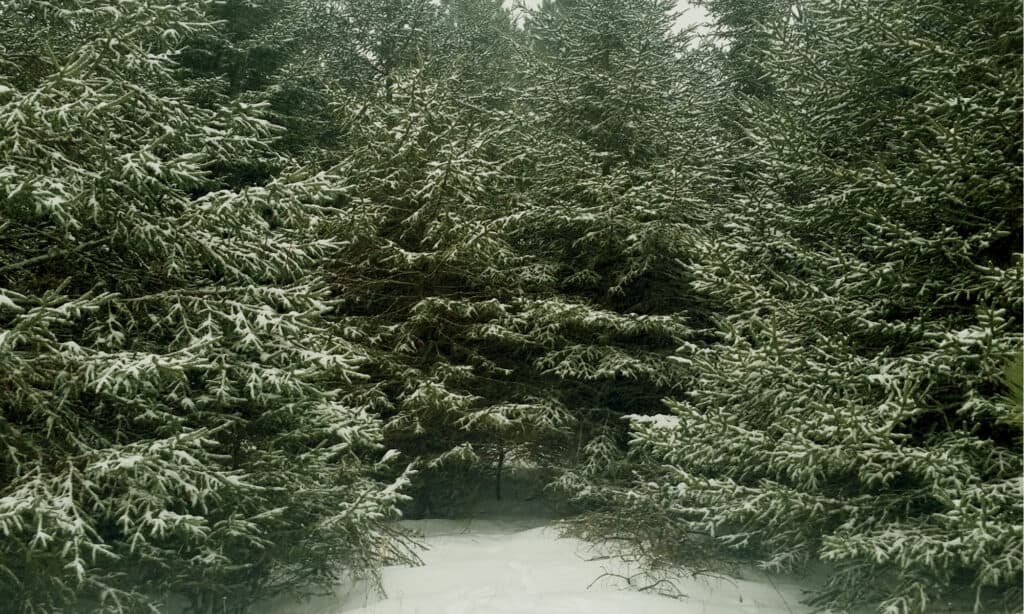
The eastern fir is also known as the balsam fir.
©Sonia Horowitz/Shutterstock.com
This tree is one of the most iconic of all, and it is quite possibly the most popular choice for use as a Christmas tree. This tree is native to North America and can be found all across the northern portion of the continent. These incredible trees can live to be 150 years old.
3. Elderberry
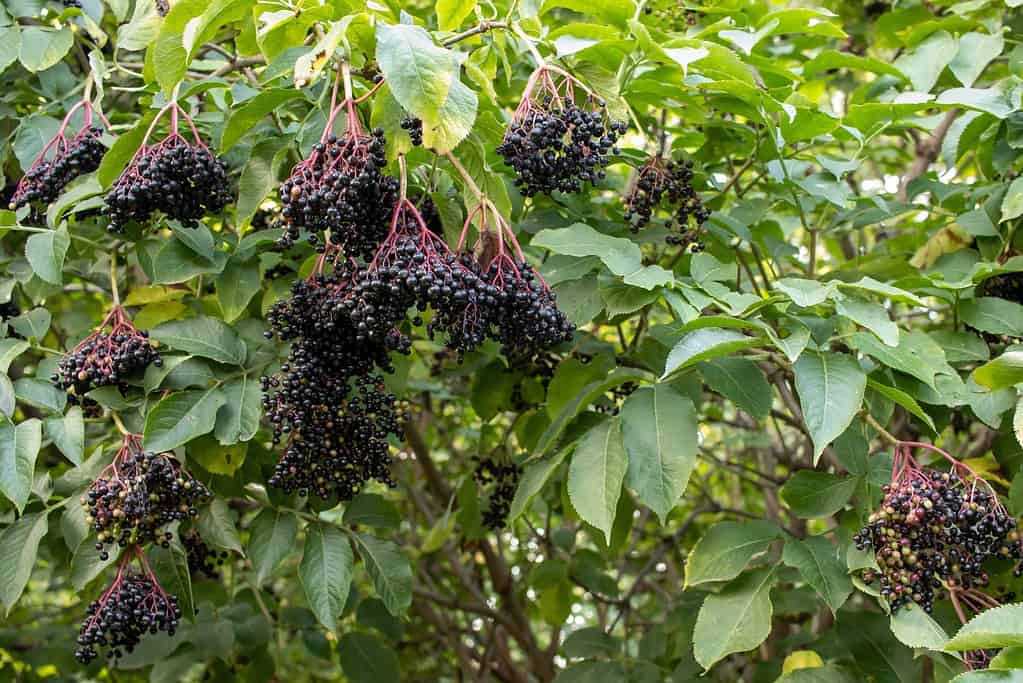
Individuals who have their own elderberry trees are able to eat the fruit they bear if prepared properly.
©Juver/Shutterstock.com
Elderberry trees are named after the fruit that they bear. These trees make a wonderful addition to anyone’s yard or garden. However, growing one might be a challenge as these trees can be temperamental.
4. Engelmann Spruce
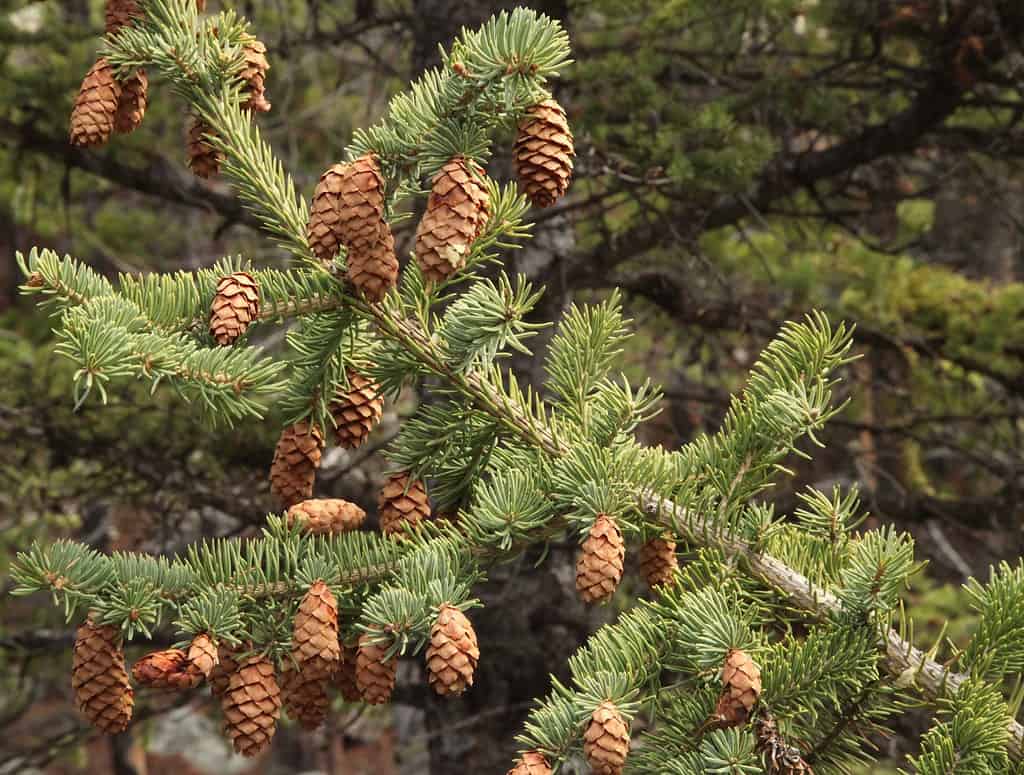
The oldest Englemann spruce was about 800 years old.
©Nikki Yancey/Shutterstock.com
The Engelmann spruce i named after George Engelmann, a botanist who lived during the 19th century. Among all trees that start with the letter E, the Englemann spruce is one of the largest. These trees often grow to be roughly 100 feet tall. The largest one grew to be roughly 220 feet tall!
5. European Alder
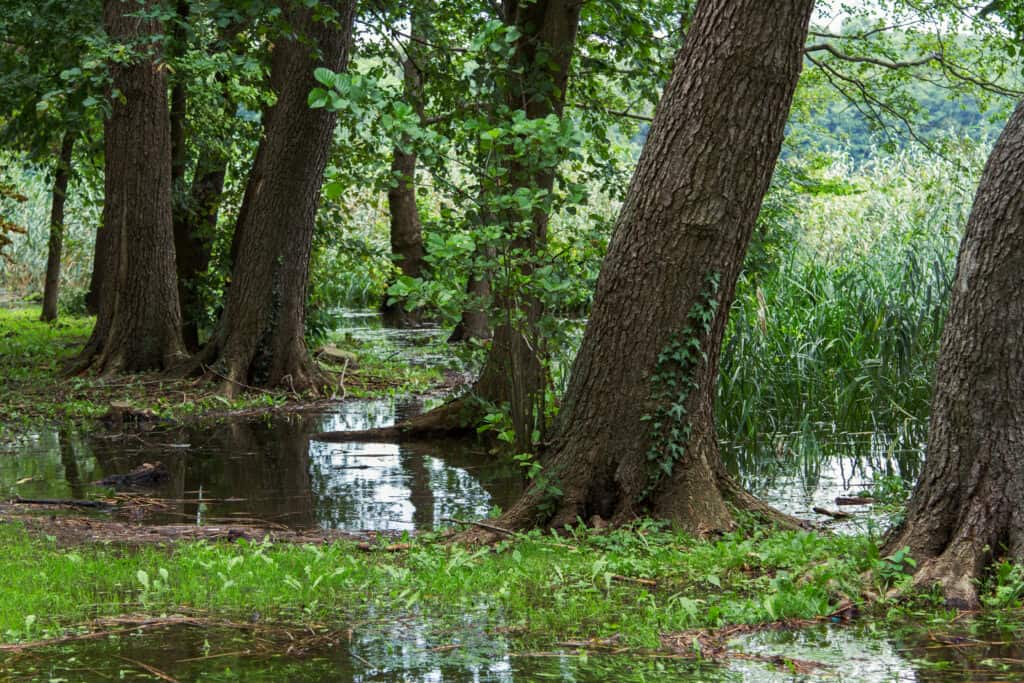
These trees are considered invasive in certain areas.
©Ihor Hvozdetskyi/Shutterstock.com
The European alder goes by many names, such as the “black alder,” “common alder,” or simply just the “alder.” Although this tree doesn’t grow to towering heights, it grows relatively fast.
6. Enebro
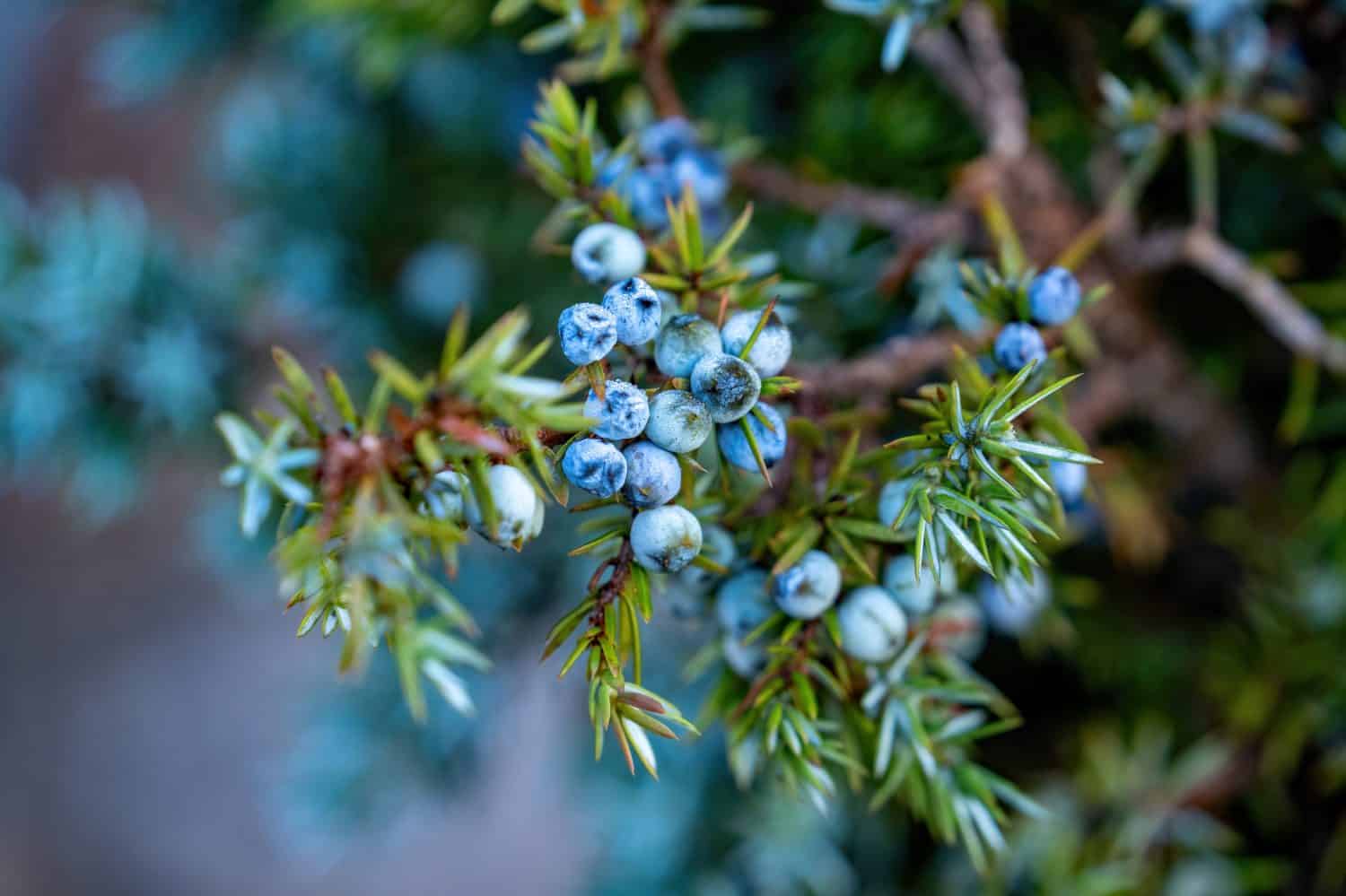
Gin contains juniper.
©Chamois huntress/Shutterstock.com
Do you enjoy the unique citrusy flavor of juniper? If so, the Enebro is the tree for you. These trees produce these fragrant berries, and they can be found growing in several areas throughout the United States. The name “Enebro” is derived from the Spanish word for juniper.
7. Emory Oak
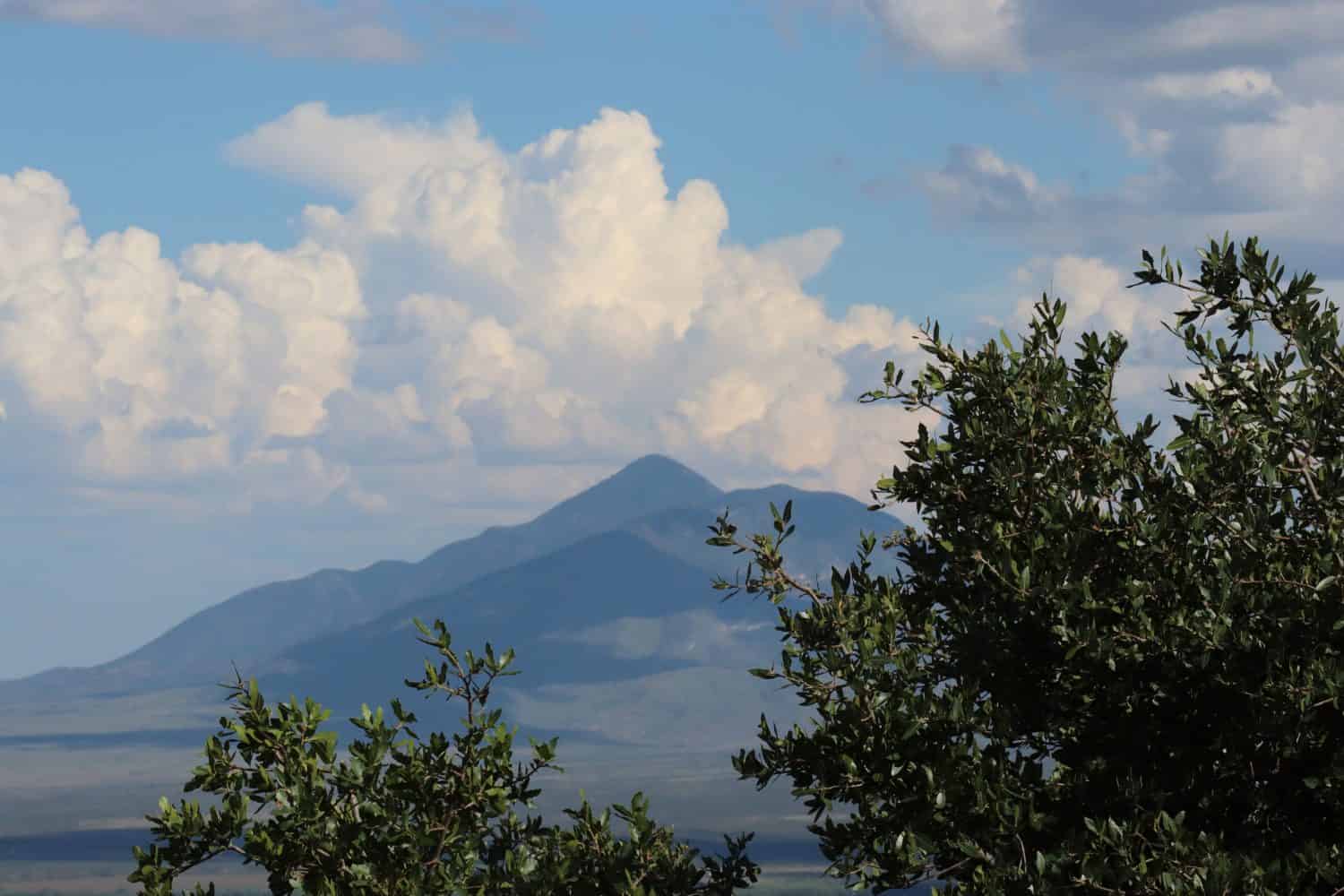
Unlike other trees that start with the letter E, the Emory oak grows in a limited area.
©CoachRad/Shutterstock.com
According to the Lady Bird Johnson Wildflower Center, the natural habitat of Emory oak trees is from the mountains of Trans-Pecos, Texas to central Arizona and New Mexico. They most frequently grow in dry foothills and moist canyons at elevations of over 5,000 feet.
8. Eastern White Pine
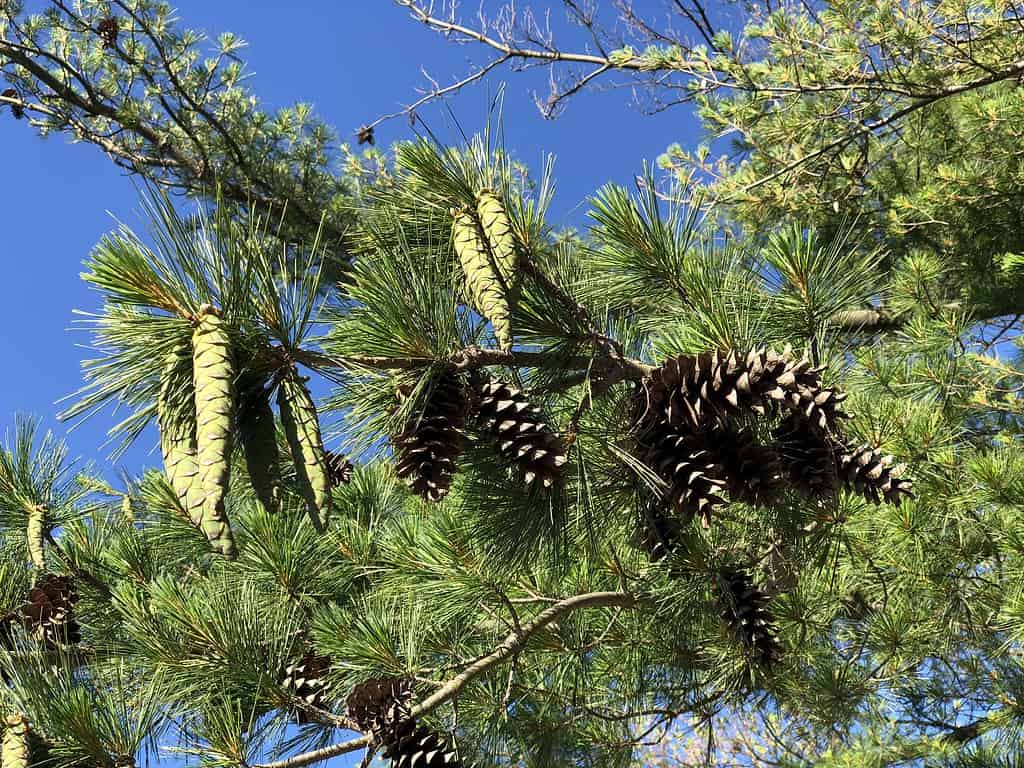
Compared to balsam firs, the eastern white pine has less fragrance.
Another large tree that has the capability to grow to incredible heights is the eastern white pine. These are another popular choice for use as Christmas trees. In addition, the wood from this tree is used for various forms of construction, which puts it in very high demand.
9. Eastern Cottonwood
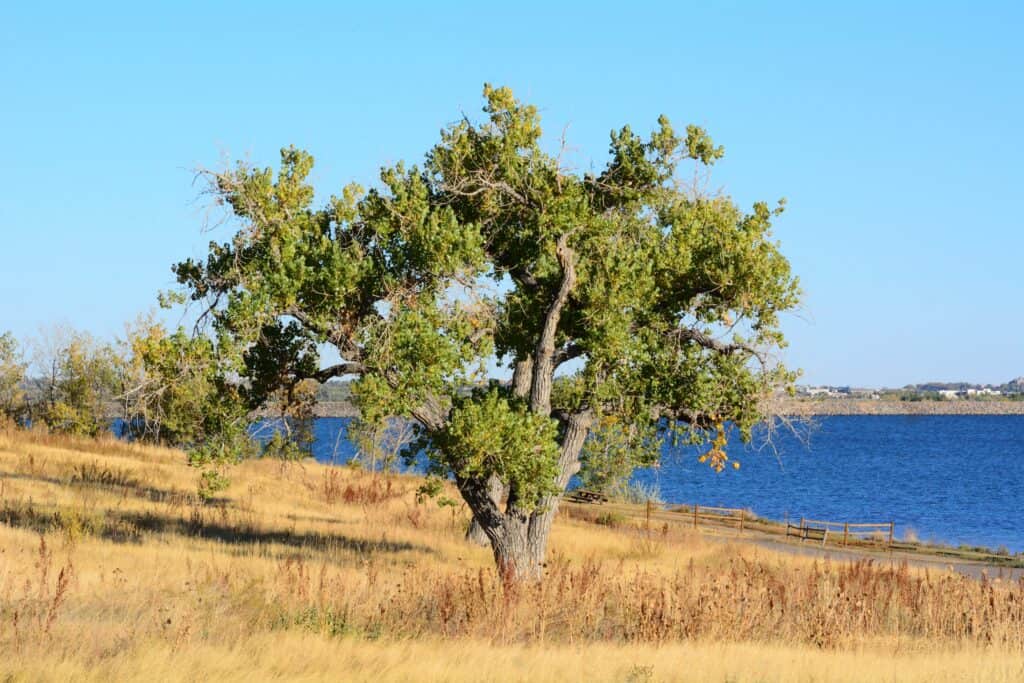
These trees have a lifespan of roughly 100 years.
©Merrimon Crawford/Shutterstock.com
The eastern cottonwood can be found all across North America. This tree has a range that spans from Canada down to Mexico.
10. European Larch
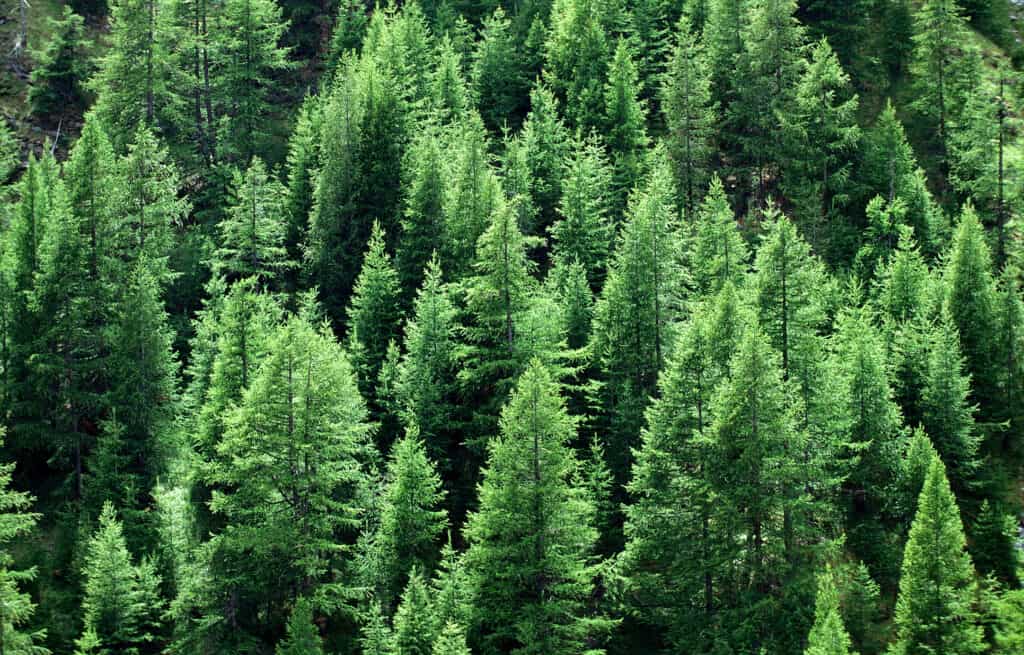
As its name suggests, the European larch is native to Europe.
©iStock.com/slowmotiongli
The European larch is a sight for sore eyes, and this tree is known far and wide for its breathtaking beauty. During the fall, the leaves transform from vibrant green to bright yellow and orange.
11. Eastern Hemlock
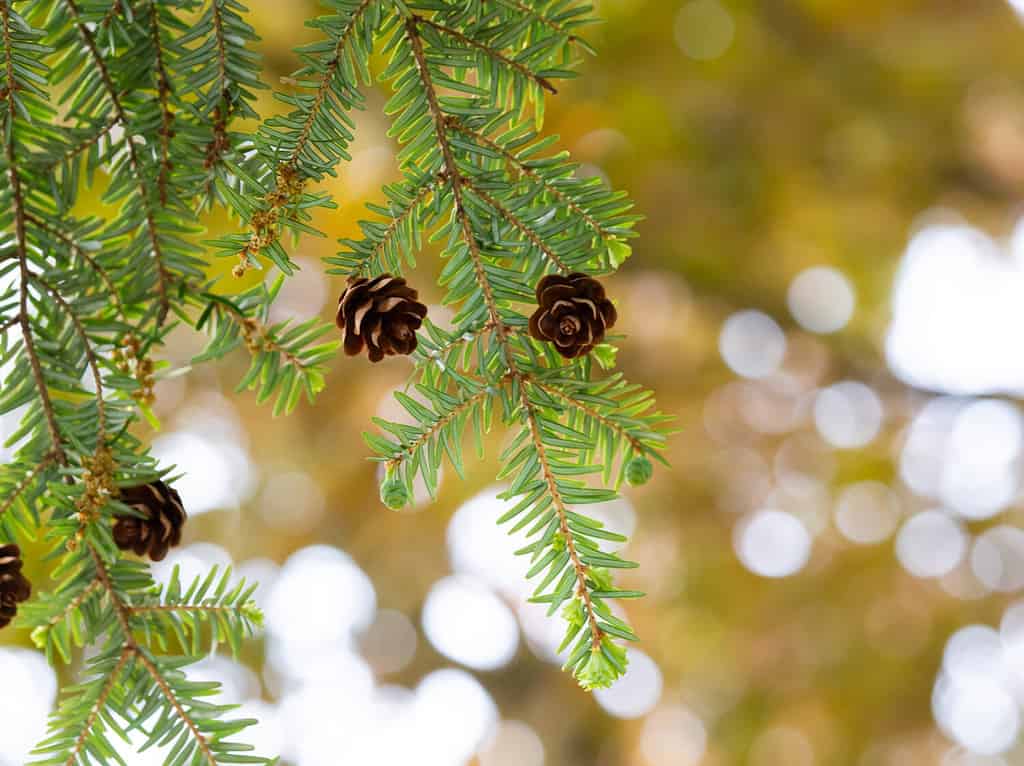
In addition to being aesthetically pleasing, the eastern hemlock is also medically significant.
©Sleepyhobbit/Shutterstock.com
Also sometimes called the “Canadian hemlock,” the eastern hemlock is a medium-sized tree that can reach heights of roughly 70 feet tall. These trees are found in Canada and the United States.
12. Eastern Redbud
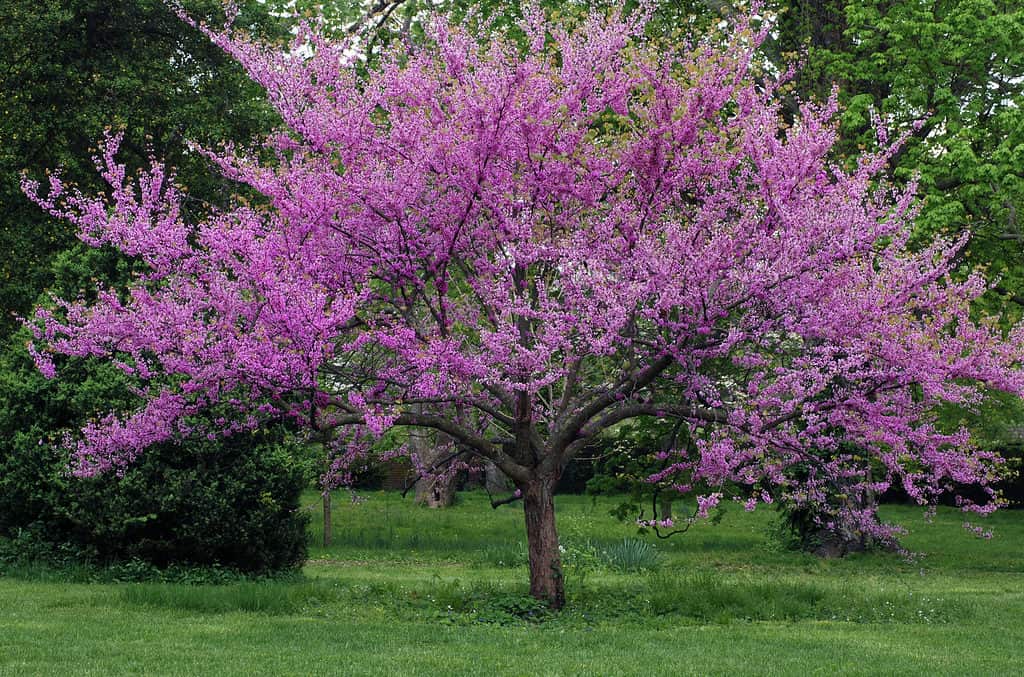
The flowers that grow on eastern redbud trees attract a variety of pollinators.
©Marie C Fields/Shutterstock.com
The eastern redbud is another beautiful tree that adds a pop of color to any home or garden. In the spring, these trees bloom dozens of tiny pink flowers before growing leaves.
13. Escarpment Live Oak

Another common name for the escarpment live oak is the “Texas live oak.”
©rawaccess/Shutterstock.com
The escarpment live oak is another hardy tree that starts with the letter E. It is popular in certain regions of the United States such as Oklahoma and Texas as well as northern Mexico. These trees are somewhat drought-resistant, which makes them a popular choice when it comes to landscaping.
14. Empress
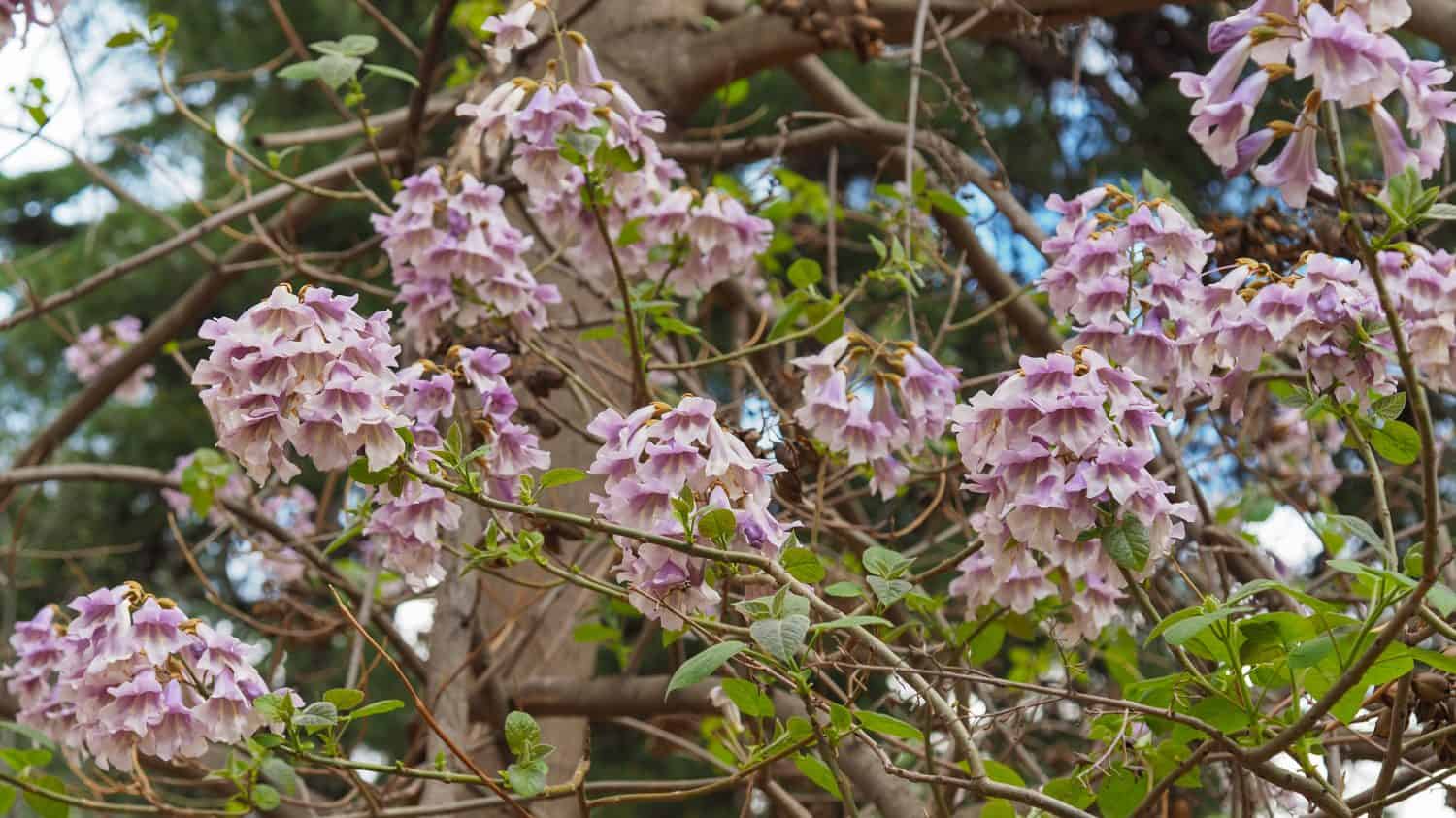
The empress tree is famous for its incredible growth speed.
©LifeCollectionPhotography/Shutterstock.com
Similar to the eastern redbud, the empress tree sprouts beautiful flowers during the spring that can take on purple and white hues. Despite their beauty, these trees are considered invasive in certain areas. Gardeners should take the time to research local laws before planting this tree. According to the North Carolina Extension Gardener Plant Toolbox, “The tree is named in honor of Russian Princess Anna Paulowna (1795-1865), while the species name tomentosa means hairy in Latin.”
15. European Hornbeam
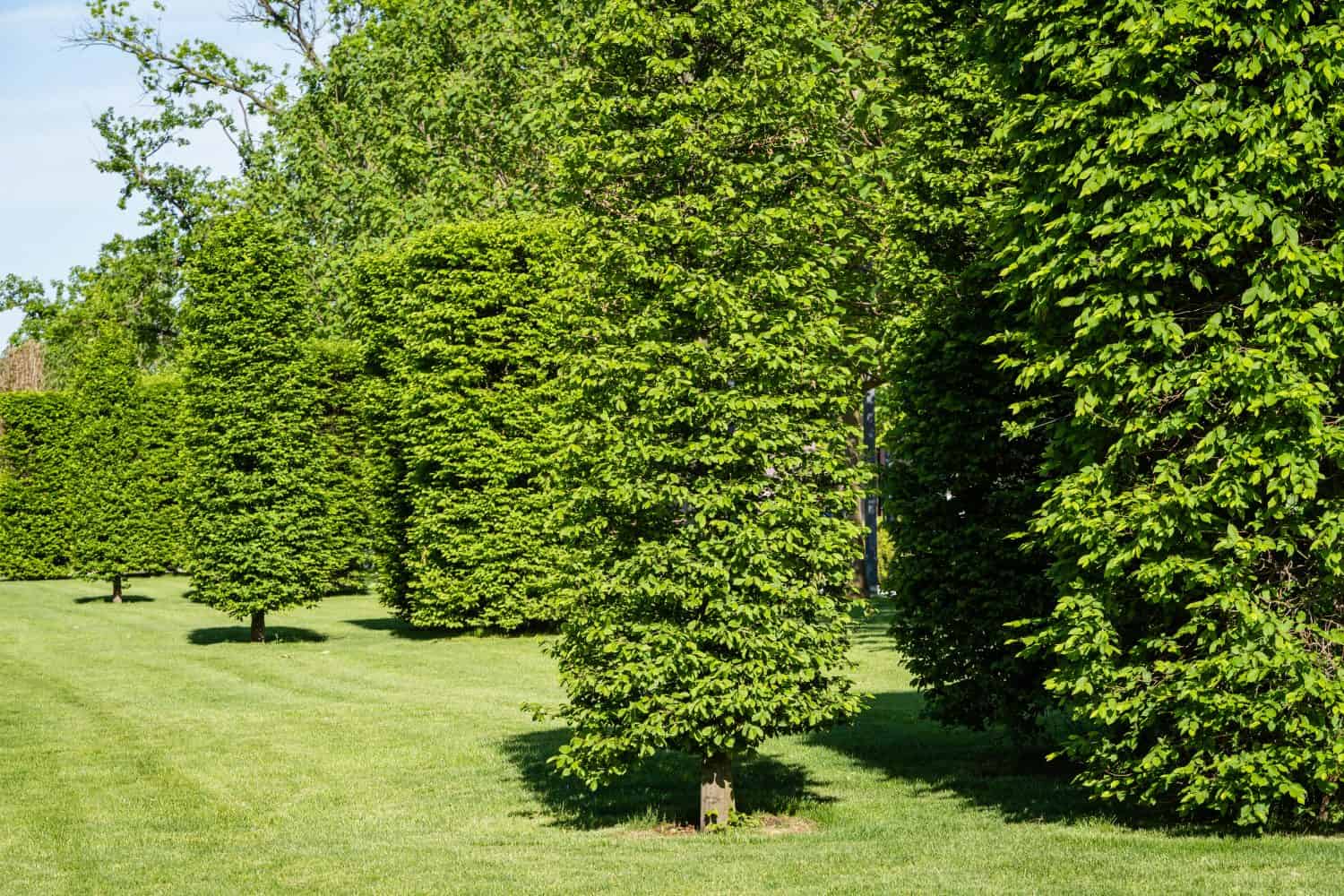
Taking proper care of your European hornbeam tree will help ensure that it will live over 100 years.
©Alexander Denisenko/Shutterstock.com
Much like the escarpment live oak, the European hornbeam is also hardy to dry conditions, making it another popular choice for landscaping. This makes it a low-maintenance and easy tree to grow and maintain.
16. Eastern Red Pine
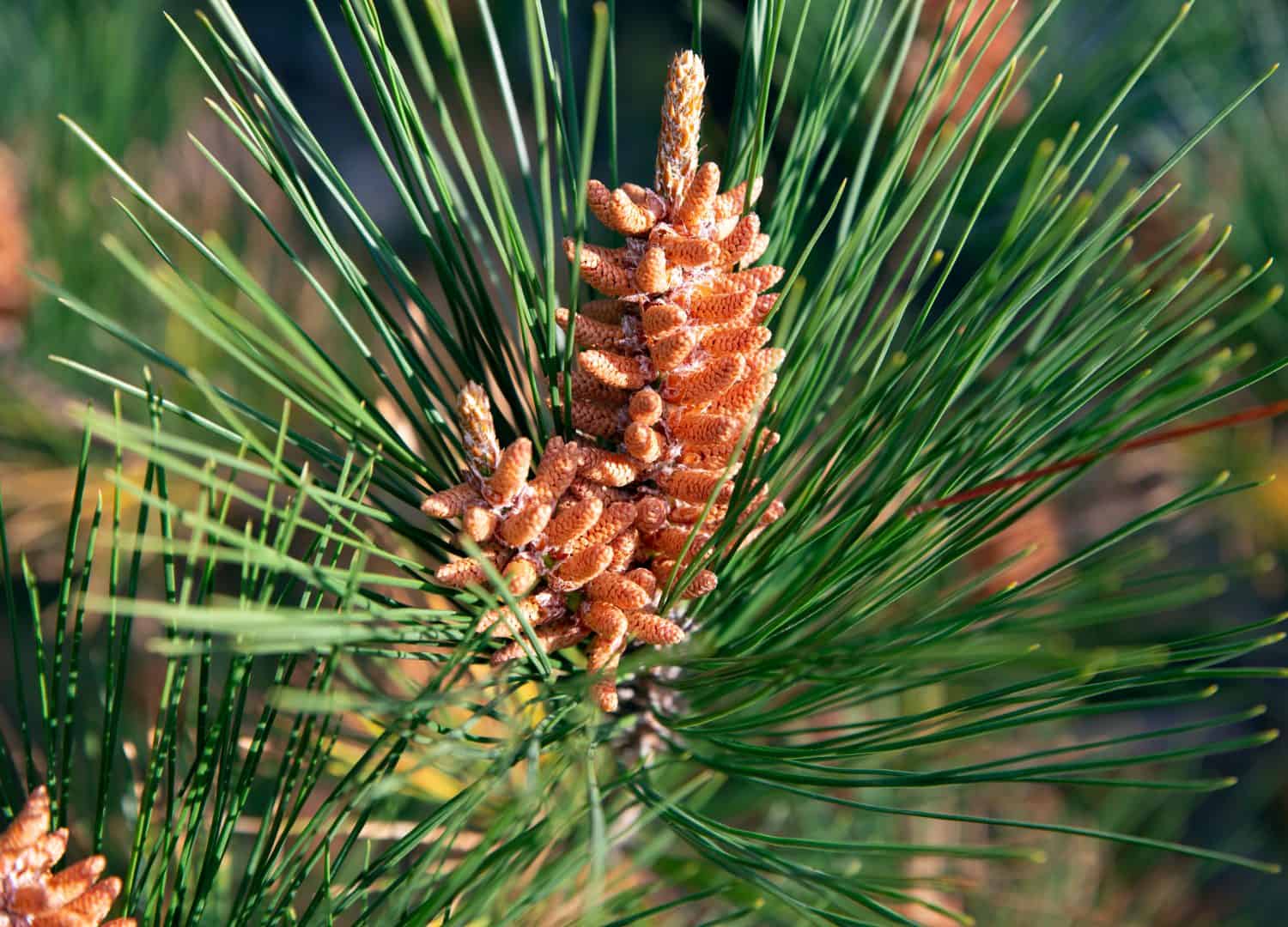
Eastern red pine trees typically grow to be between 70 and 120 feet tall.
©SandroRossiImagery/Shutterstock.com
The wood of eastern red pine trees is in high demand. It is strong, which makes it perfect for use in construction. Shockingly, these trees can grow to be incredibly old. In fact, the oldest recorded red pine tree was estimated to have lived for roughly 300 years.
Summary Table of See 16 Awesome Trees That Start With E
| Tree | Height at Maturity |
|---|---|
| English Oak | 30 – 40 feet |
| Eastern Fir | 45 – 65 feet |
| Elderberry | 5 – 15 feet |
| Engelmann Spruce | 80 – 130 feet |
| European Alder | 55 – 75 feet |
| Enebro | 65 – 135 feet |
| Emory Oak | 30 – 60 feet |
| Eastern White Pine | 50 – 100 feet |
| Eastern Cottonwood | 75 – 105 feet |
| European Larch | 70 – 100 feet |
| Eastern Hemlock | 40 – 80 feet |
| Eastern Redbud | 20 – 30 feet |
| Escarpment Live Oak | 15 – 40 feet |
| Empress | 20 – 60 feet |
| European Hornbeam | 30 – 60 feet |
| Eastern Red Pine | 60 – 120 feet |
The photo featured at the top of this post is © Marie C Fields/Shutterstock.com
Thank you for reading! Have some feedback for us? Contact the AZ Animals editorial team.







